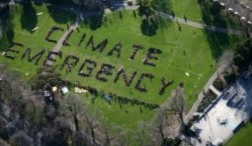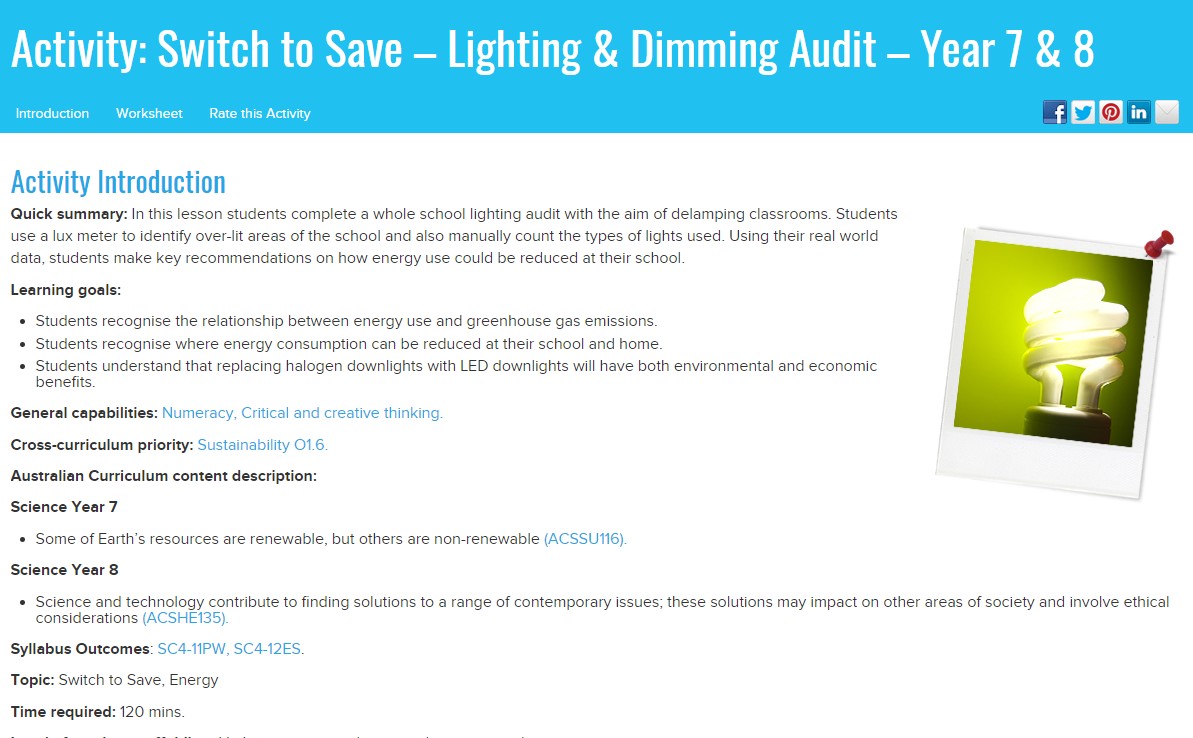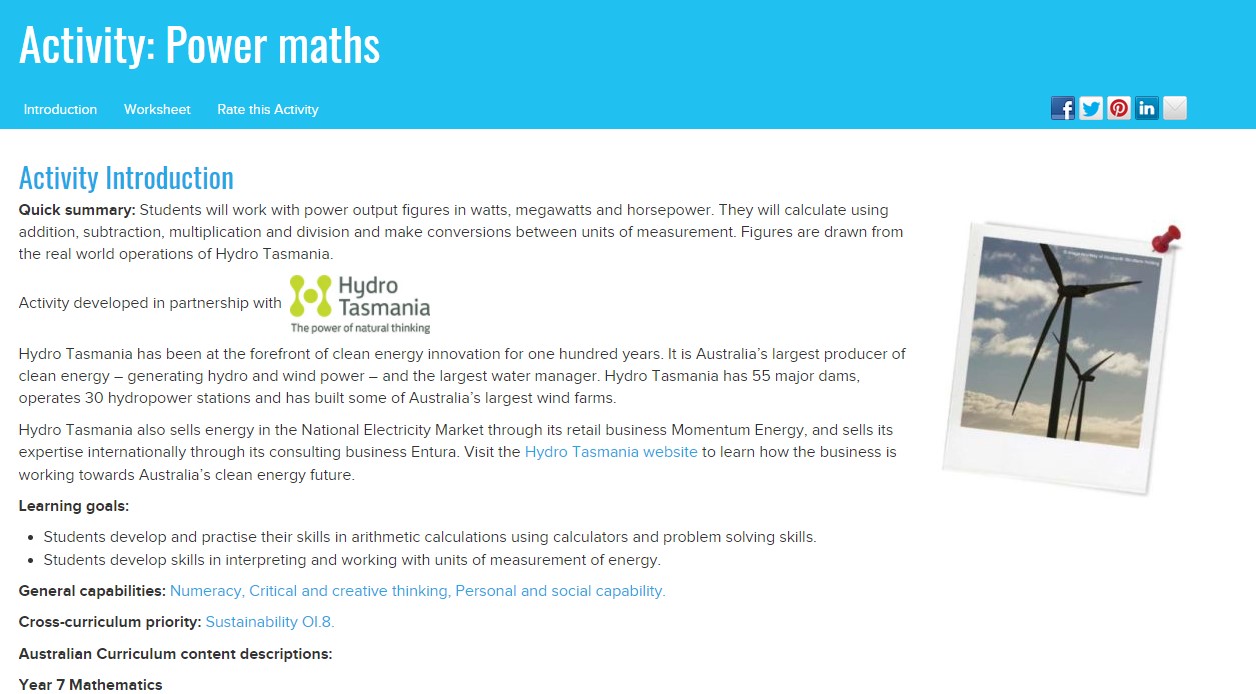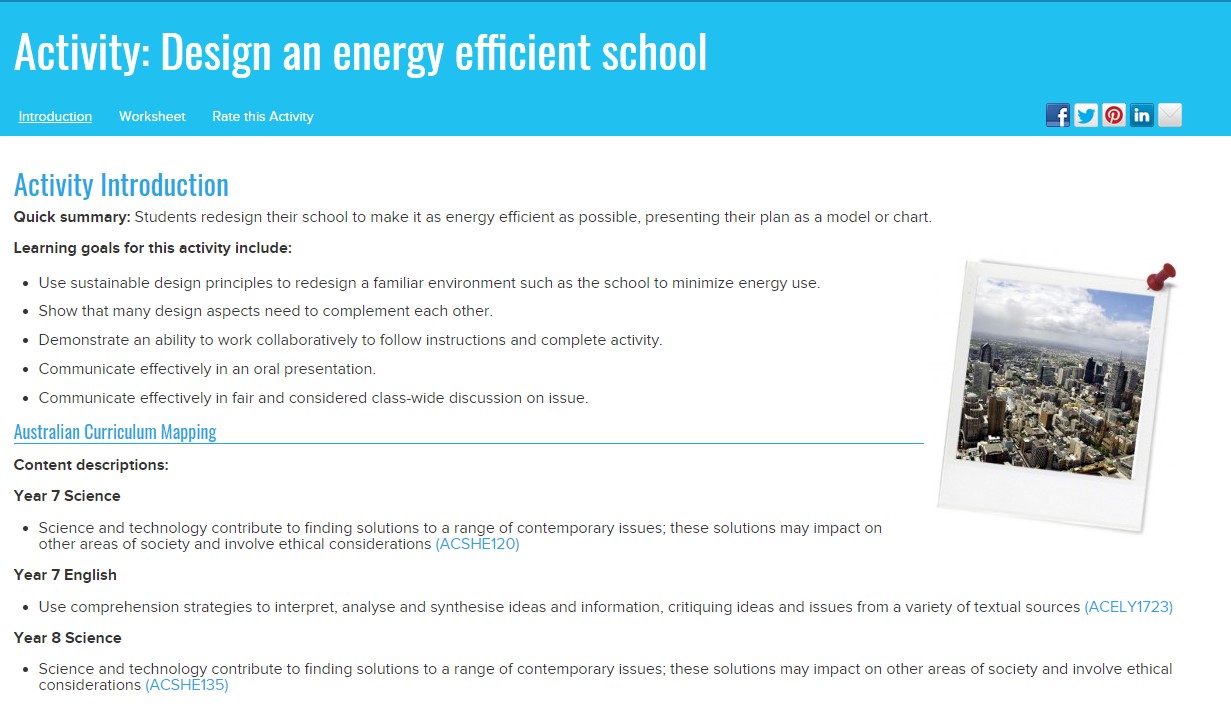
Units of work involving our environment enable your students to immediately apply their learning in the real world giving them greater motivation and opportunities to excel.
Curriculum materials are designed to meet a wide range of educational needs throughout Australia including:
- Australian Curriculum
- Other State Curricula
- Latest innovations in learning and teaching practice eg Principles of Learning and Teaching (PoLT)
- The e5 instructional model – engage, explore, explain, elaborate and evaluate
- The curriculum component of AuSSI – the Australian Sustainable Schools Initiative
- Education for a Sustainable Future, Australian Government
Teachers will find everything they need to teach a curriculum unit on energy for grades 7 and 8 in the teacher Curriculum section of the website. Student research materials can be found under Student Toolbox in the top menu bar along with self-directed activities and various tools.
Assessment background: Education systems have high expectations concerning assessment. Many schools will have very prescriptive assessment policies. Having assessment processes in place throughout a unit of work and involving students in their assessment, will assist teachers to meet these expectations. The current overarching understanding of assessment is:
- Assessment forlearning will help teachers respond to students’ learning needs during the unit of work.
- Assessment as learning occurs when students monitor their own progress and make learning choices.
- Assessment of learning occurs when teachers use evidence of what students have achieved. Teachers are often obliged to measure this against Learning Outcomes or Standards.
To assist teachers, activities have been identified to assist with assessment. Teachers will first need to decide what aspects of their curriculum they wish to assess. This will be determined by their State’s official curriculum policies and documents. This in time may be superseded by an Australian Curriculum.
Teachers who work with Cool Australia often use the following process to develop their assessment:
- Once the unit of work has been chosen, choose which learning outcomes, standards etc. that are going to be assessed. Often this is around five outcomes, standards etc for the entire unit..
- Link the appropriate activities throughout this unit with the areas to be assessed.
- Decide how are students being assessed during their learning
- When students are developing learning goals, and then link the goals to the assessment.
- Decide how individual student’s learning goals will be assessed
- Modify activities where needed so they are a neat fit with your assessment needs.
- As the unit develops, choose self-assessment tools with which students are familiar for self-assessments.
- Inform students at the start of the unit about their assessment requirements.
Assessment ideas
A unit of work on an environmental topic will provide a range of tasks suitable for assessment. Identify the tasks that best assist with the learning outcomes/standards etc you wish to assess.
Tow list of assessment ideas have been develop as follows:
- General – could apply to any unit of work on our environment using an inquiry approach
- More specifically – identifies activities in this unit of work that has tasks suitable for assessment.
General
- Use a prior learning activity as a self assessment tool by asking students to review how their understandings and misconceptions have changed over the course of the unit.
- When doing activities such as cool question, students are able to choose and modify questions of interest to research and locate and extract relevant material to answer the questions.
- When students produce informative texts they can support their material with evidence diagrams and graphs.
- Students present their research information or findings in a variety of ways for specific audiences justifying their chosen media.
- They incorporate data and expand on mathematical concepts to explain environmental issues and solutions.
- Use the ‘Considering social action activities’ to demonstrate students can apply the things they have learnt.
More specifically
- Students use scientific concepts to explain how energy sources are converted to supply energy.
- They compare energy sources and technologies.
- They can critically explore future energy producing and conservation technologies identifying their relative usefulness and application.
- They are able to assess the usefulness of material found on the internet.
- In their work, they provide examples of how people’s behavior is linked to a sustainable future for all.

Activity Introduction
Quick summary:In this lesson students complete a whole school lighting audit with the aim of delamping classrooms. Students use a lux meter to identify over-lit areas of the school and also manually count the types of lights used. Using their real world data, students make key recommendations on how energy use could be reduced at their school.
Learning goals:- Students recognise the relationship between energy use and greenhouse gas emissions.
- Students recognise where energy consumption can be reduced at their school and home.
- Students understand that replacing halogen downlights with LED downlights will have both environmental and economic benefits.
General capabilities: Numeracy, Critical and creative thinking.
Cross-curriculum priority: Sustainability 01.6.
Australian Curriculum content description:
- Science Year 7
Some of Earth's resources are renewable, but others are non-renewable (ACSSU116). - Science Year 8
Science and technology contribute to finding solutions to a range of contemporary issues; these solutions may impact on other areas of society and involve ethical considerations (ACSHE135).
Syllabus Outcomes: SC4-11PW, SC4-12ES.
Topic: Switch to Save, Energy
Time required: 120 mins.

Activity Introduction
Quick summary: Students will work with power output figures in watts, megawatts and horsepower. They will calculate using addition, subtraction, multiplication and division and make conversions between units of measurement. Figures are drawn from the real world operations of Hydro Tasmania.
Activity developed in partnership with Hydro Tasmania(The power of natural thinking)
Hydro Tasmania has been at the forefront of clean energy innovation for one hundred years. It is Australia's largest producer of clean energy - generating hydro and wind power and the largest water manager. Hydro Tasmania has 55 major dams, operates 30 hydropower stations and has built some of Australia's largest wind farms.
Hydro Tasmania also sells energy in the National Electricity Market through its retail business Momentum Energy, and sells its expertise internationally through its consulting business Entura. Visit the Hydro Tasmania website to learn how the business is working towards Australia's clean energy future.
Learning goals:
- Students develop and practise their skills in arithmetic calculations using calculators and problem solving skills.
- Students develop skills in interpreting and working with units of measurement of energy.
General capabilities: Numeracy, Critical and creative thinking, Personal and social capability.
Cross-curriculum priority: Sustainability Ol.8.
Australian Curriculum content descriptions:Year 7 Mathematics

Activity Introduction
Quick summary: Students redesign their school to make it as energy efficient as possible, presenting their plan as a model or chart.
Learning goals for this activity include:
- Use sustainable design principles to redesign a familiar environment such as the school to minimize energy use.
- Show that many design aspects need to complement each other.
- Demonstrate an ability to work collaboratively to follow instructions and complete activity.
- Communicate effectively in an oral presentation.
- Communicate effectively in fair and considered class-wide discussion on issue.
Australian Curriculum Mapping
Content descriptions:
- Year 7 Science
Science and technology contribute to finding solutions to a range of contemporary issues; these solutions may impact on other areas of society and involve ethical considerations (ACSHE120) - Year 7 English
Use comprehension strategies to interpret, analyse and synthesise ideas and information, critiquing ideas and issues from a variety of textual sources (ACELY1723) - Year 8 Science
Science and technology contribute to finding solutions to a range of contemporary issues; these solutions may impact on other areas of society and involve ethical considerations (ACSHE135)